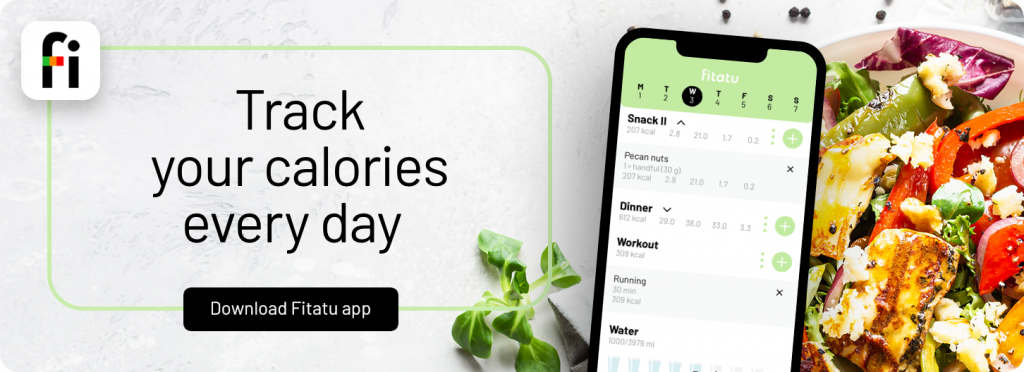Low FODMAP diet – principles and tips

If you struggle with irritable bowel syndrome (IBS), the low FODMAP diet is a topic that should interest you. Discover what FODMAP is and in which products it is found. Learn about the characteristics and principles of the low FODMAP diet.
Unpleasant symptoms of irritable bowel syndrome (IBS) affect an increasing number of people of all ages. The low FODMAP diet is considered the gold standard in combating this condition. Properly conducted, it reduces symptoms and improves the quality of life of patients.
What is FODMAP?
FODMAP (Fermentable Oligo-, Di-, Mono-saccharides, And Polyols) are fermentable oligo, di, and monosaccharides and polyols. These compounds are present in food. Due to poor absorption and rapid fermentation, they cause undesirable symptoms in people with IBS. FODMAPs are found in various products such as some vegetables and fruits, legumes, cereals, milk and dairy products, honey, and sweeteners. These fermenting compounds can be divided into several main groups: fructose, lactose, fructans, galactans, and polyols.
The impact of FODMAP on the body in IBS
In people with IBS, fermentable saccharides and polyols cause a range of unpleasant gastrointestinal problems, such as bloating, abdominal pain, excessive gas production, diarrhea, and/or constipation. You can read more about IBS symptoms in the article “…”
FODMAP – recommended and non-recommended products
High in FODMAP – not recommended
- Fruits: apples, pears, peaches, nectarines, mangoes, watermelon, apricots, cherries, blackberries, avocados, plums, fruit juices, lychee, dried fruits;
- Vegetables: mushrooms, cauliflower, asparagus, garlic, onions, leeks, dill, artichokes, Brussels sprouts, broccoli, radishes, turnips, cabbage, beets, sweet potatoes;
- Legumes: beans, chickpeas, lentils, soy;
- Cereals: muesli, couscous, wheat flour, sweet baked goods, biscuits, wheat bread and rolls, oats, wheat pasta, rye;
- Nuts: cashews, pistachios;
- Dairy: cow and goat milk, cottage cheese, ice cream, ricotta, cream, kefir, buttermilk, yogurts;
- Plant-based dairy substitutes: soy, oat, and spelt drinks;
- Sweeteners: honey, xylitol, maltitol, mannitol, sorbitol, agave syrup, fructose syrup;
- Others: ketchup, spice mixes with the addition of onions and garlic.
Low in FODMAP – recommended
- Fruits: pineapple, lemons, oranges, raspberries, grapes, melon, grapefruit, bananas, blueberries, kiwi, passion fruit, papaya;
- Vegetables: carrots, potatoes, tomatoes, lettuce, spinach, celery, pumpkin, eggplant, green beans, olives, red bell pepper, zucchini, beet greens, fresh herbs, bamboo shoots;
- Legumes: peas;
- Cereals: potato flour, buckwheat, millet, tapioca, quinoa, rice, gluten-free bread;
- Nuts: hazelnuts, pine nuts, walnuts, macadamia;
- Dairy: hard and semi-hard cheeses, lactose-free yogurts, lactose-free milk, Greek yogurt;
- Plant-based dairy substitutes: rice and coconut drinks;
- Sweeteners: sugar, maple syrup, erythritol;
- Others: red, white, rice vinegar, wasabi, mustard, mayonnaise.
Diet principles
The low FODMAP diet is divided into 3 stages. The purpose of the diet is to verify which products cause IBS symptoms. The diet must be carried out under the supervision of a dietitian, who will correctly indicate which group or groups of fermenting carbohydrates cause unpleasant symptoms and will instruct how to properly go through the first 2 phases and then create a personalized diet.
Stage 1 – Elimination
In the first stage, all rich sources of FODMAP should be eliminated and replaced with products low in fermentable carbohydrates. This phase should last from 4 to 6 weeks. Too short an elimination phase may not lead to the relief of gastrointestinal symptoms, while too long an elimination can result in a disturbance of the gut microbiota.
Stage 2 – Reintroduction — reintroduction of FODMAP products
After the elimination phase, it is time to reintroduce foods rich in fermentable carbohydrates. The diet should be diversified gradually, starting with products from one group, e.g. products containing fructose. It is recommended to introduce 1 product every 3 days and gradually increase its amount. This phase usually lasts 8 to 12 weeks, sometimes specialists extend this phase to properly verify problematic products. During this stage, it is necessary to note whether any undesirable symptoms from the digestive system appeared. For this purpose, the Fitatu® app with the toilet function are best.
Stage 3 – Personalization
After the second stage, a specialist prepares recommendations based on the results obtained from the previous phase. The products that did not cause gastric problems are permanently included in the diet. The goal of personalization is to prepare a diet that limits as few product groups as possible to minimize the risk of nutrient deficiencies and reduce symptoms from the digestive system. Over time, you can try to reintroduce products that caused undesirable symptoms during the second phase to determine if they still cause IBS symptoms. It is recommended to follow a personalized diet long-term. You can read more about this in the article IBS, or irritable bowel syndrome – what to eat and what to avoid?.
Risks of long-term adherence to the low FODMAP diet
The low FODMAP diet, especially in phase 1, eliminates many product groups and should always be followed under the supervision of a qualified dietitian for a specified period. Prolonged use can lead to several adverse conditions.
Nutritional deficiencies
The low FODMAP diet is deficient in elements like iron, carbohydrates, and dietary fiber. Prolonged iron deficiency can lead to anemia. By excluding certain types of vegetables, the diet becomes deficient in natural antioxidants such as vitamins A and C, flavonoids, or anthocyanins. Eliminating dairy and milk can result in calcium deficiency, and eliminating lactose reduces the absorption of this micronutrient from food.
Excessive weight loss
Due to the elimination of many products, the low FODMAP diet may be low in calories. Prolonged adherence to such a diet can lead to excessive weight loss and, consequently, severe malnutrition.
Changes in microbiota
Long-term exclusion of many product categories can significantly deplete the gut microbiota. The tiny bacteria living in the lower part of the digestive system, as numerous studies show, have a positive effect on our body’s health. They assist in immune processes and in digesting nutrients.
Eating disorders
For those struggling with eating disorders, following the low FODMAP diet can trigger a relapse/exacerbation of the disease. The restrictive nature of the diet and focusing on food quantity can be risky for people with disorders like anorexia or orthorexia.

How to reduce FODMAP content — tips
Processing high-FODMAP foods can reduce the content of highly fermentable carbohydrates. People with IBS can expand their menu thanks to the following techniques:
Soaking and cooking
Galactans and fructans are water-soluble, so they are leached out during cooking and soaking and remain in the water. This effectively lowers the FODMAP content.
Pickling
During the pickling process, vegetables are usually left in a special brine, which preserves them. Similar to the soaking and cooking process, soluble galactans and fructans remain in the brine.
Sprouting
Studies indicate that sprouting significantly reduced the FODMAP content in wheat, rye, red beans, and mung beans. This is all thanks to the enzymes released during sprouting that break down troublesome saccharides. However, not all products were positively affected by the sprouting process; the FODMAP content in chickpeas slightly increased after sprouting.
Fitatu® Support Group
Reaching your goal is easier with the support of others! Join our Fitatu Facebook group and achieve your goals together with other Fitatu® app users. With the group members, you can share your results every day and motivate each other to keep going.
Fitatu® App
Not yet familiar with Fitatu®? Download the app from the Play Store or Apple Store and start taking charge of your health with us! Do you want to have access to all the features? Go for Fitatu® Premium! For blog readers, we have a special discount code: FODMAP-X6. Go to https://www.fitatu.com/app/order-and-payment and claim a 20% discount on Fitatu® Premium annual plans. The code combines with other promotions.
What else can you find in Fitatu® Premium?
- Over 2,000 recipes plus dozens of new ones every month,
- additional intermittent fasting plans,
- possibility to create shopping lists,
- 6 pre-prepared meal menus,
- filtering of products and recipes,
- more synchronization with fitness apps,
- access to the app in the web version,
- no adverts!
Bibliography:
- Bellini M, Tonarelli S, Nagy AG, Pancetti A, Costa F, Ricchiuti A, de Bortoli N, Mosca M, Marchi S, Rossi A. Low FODMAP Diet: Evidence, Doubts, and Hopes. Nutrients. 2020 Jan 4;12(1):148. doi: 10.3390/nu12010148. PMID: 31947991; PMCID: PMC7019579.
- Syed K, Iswara K. Low-FODMAP Diet. 2022 Sep 5. In: StatPearls [Internet]. Treasure Island (FL): StatPearls Publishing; 2023 Jan–. PMID: 32965895.
- https://dietetycy.org.pl/dieta-low-fodmap-zlotym-standardem-w-walce-z-ibs/
- https://dietetycy.org.pl/dieta-fodmap-w-zespole-jelita-drazliwego/
- https://ncez.pzh.gov.pl/choroba-a-dieta/dieta-fodmap-zasady-i-zastosowanie/
- https://www.monashfodmap.com/blog/sprouting-does-it-reduce-fodmap-content/
- https://www.monashfodmap.com/blog/food-processing-and-fodmaps-what-you/
Older entries:
- Overview of materials intended for contact with food. What should kitchenware be made of?
- Demystifying fat: How many calories are in a fat?
- Sweet but smart snacks for kids : A look at popular sweets and healthier alternatives
- Fat in a weight loss diet — Enemy or ally?
- 11 tips on how to prepare meals faster





